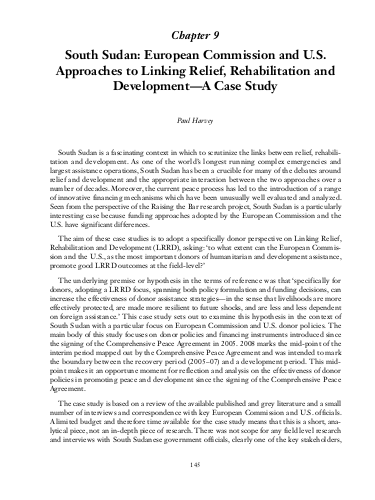
South Sudan is a fascinating context in which to scrutinize the links between relief, rehabilitation and development. As one of the world’s longest running complex emergencies and largest assistance operations, South Sudan has been a crucible for many of the debates around relief and development and the appropriate interaction between the two approaches over a number of decades. Moreover, the current peace process has led to the introduction of a range of innovative financing mechanisms which have been unusually well evaluated and analyzed. Seen from the perspective of the Raising the Bar research project, South Sudan is a particularly interesting case because funding approaches adopted by the European Commission and the U.S. have significant differences.
The aim of these case studies is to adopt a specifically donor perspective on Linking Relief, Rehabilitation and Development (LRRD), asking: ‘to what extent can the European Commission and the U.S., as the most important donors of humanitarian and development assistance, promote good LRRD outcomes at the field-level?’